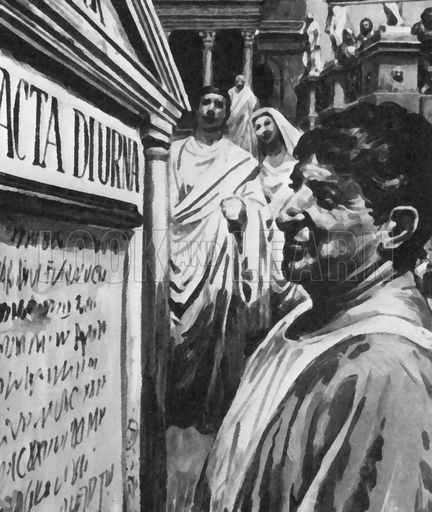Branded Content” or “Content Marketing” is as old as journalism itself and, throughout its long history, it has evolved in parallel with it, taking advantage of all the potential that information technology has put within its reach.
 Journalism is generally considered to have been born in 130 BC, associated with the development of the first recorded means of public information: the Acta Diurna (Rome’s daily newspaper or archive). That first “free newspaper”, initially carved in stone or metal and later inscribed on tablets, was published in the Forum, the city’s nerve centre, so that anyone who could read could have access to news of general interest.
Journalism is generally considered to have been born in 130 BC, associated with the development of the first recorded means of public information: the Acta Diurna (Rome’s daily newspaper or archive). That first “free newspaper”, initially carved in stone or metal and later inscribed on tablets, was published in the Forum, the city’s nerve centre, so that anyone who could read could have access to news of general interest.
These notices kept the inhabitants of Rome up to date with events and contained both official information from the institutions of Rome, as well as economic affairs, entertainment, events and society news (the ‘heart’ press) and even astrological readings (the horoscope).
From the Acta Diurna through the Acta Senatus to the Acta Diurna Populi Romani, the topics dealt with were adapted to the interests of the public on the one hand, but also to the particular interests of their rulers and ruling classes on the other.
The social recognition, approval and admiration of the citizens of Rome depended to a large extent on the work of the diurnarii, the name given to the professionals in charge of producing information (journalists).

But there was also a high sociological component, we could say that the information offered by the Acta Diurna established who one was or was not to be in Rome, and on this depended to a large extent the permanence or improvement in a privileged social position. Finally, merchants found in this medium of information an ideal space to make their products known, to create consumer trends and to do business.
This is how, in the first place, censorship, publicity and referrals appear, that is, any means of channelling official information towards private interests. And secondly, private information media, parallel to the official media. Thus, the figure of the praecones, civil servants who went around the city touting the news, in order to reach those (“followers”) who were not so good at reading, was joined by the strilloni (“influencers”), independent criers who offered themselves to any interested party to publicise their public, social or economic affairs in a loud voice. And as one thing led to another, the figure of the subrostani appeared, who, like agencies, sold news they claimed to know or offered information on behalf of interested third parties.

Thus we can assume that it is also at this point that illicit advertising appears. From “tell them that the battle was an heroic deed, but make it look like I didn’t tell you” to “spread this rumour, but I can’t reveal the source”, there is only one step, the one that leads from covert advertising to unfair advertising.
Jaime Ávila Rodríguez de Mier
General Directorofe Recursos de Mercado
Published on 1 June 2022 by the magazine:




